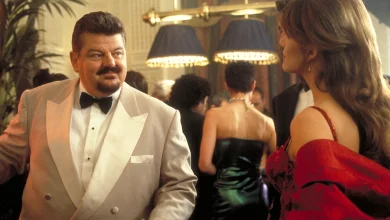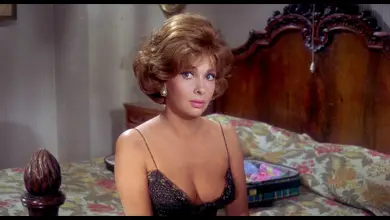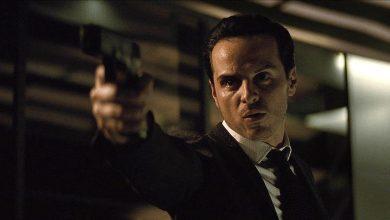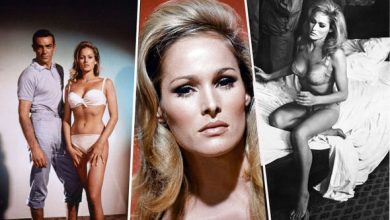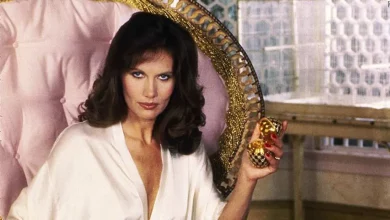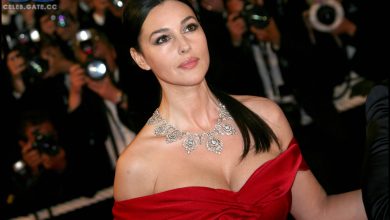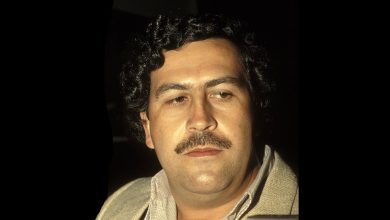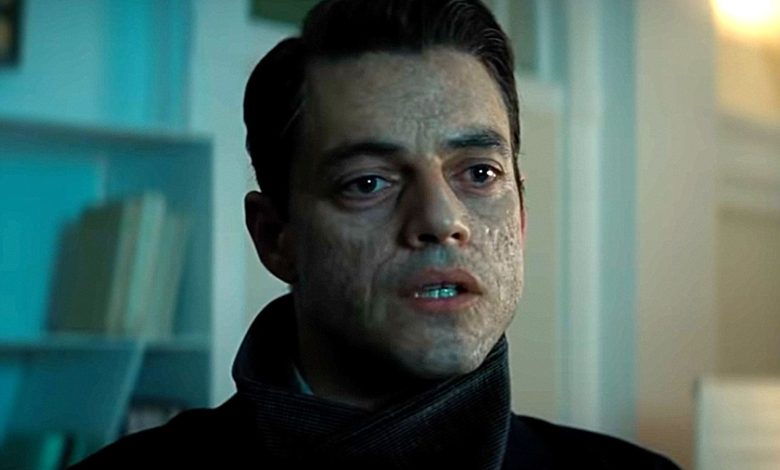
The representation of facial differences in movies has long been a topic of discussion and concern. The association of facial differences with villainous characters has perpetuated stereotypes and stigmas, impacting the perception and experiences of individuals with facial differences in real life. In this article, we explore the implications of this trend, the advocacy efforts to challenge it, and the importance of promoting positive representation. By delving into the experiences of individuals with facial differences and examining the role of the film industry, we aim to shed light on the need for change and inclusivity.
Key Takeaways
- The portrayal of villains with facial differences in movies, such as the James Bond franchise, has perpetuated harmful stereotypes and stigmas.
- Advocacy groups like Changing Faces have been actively campaigning for accurate and positive representation of facial differences in films.
- The film industry has the power to shape perceptions and attitudes, and by promoting authentic representation, it can foster empathy, understanding, and acceptance.
- Individuals with facial differences commonly face challenges to their mental health due to societal judgments and stereotypes.
- Positive representation and opportunities for authentic portrayals by actors with facial differences are crucial in challenging stereotypes and fostering inclusivity in film and society.

The Villainous Trope
Facial differences as a visual marker of villainy are not exclusive to Bond movies. Characters like Scar from “The Lion King” and Darth Vader from “Star Wars” also embody this trope. However, the release of the new Bond film presents an opportunity for facial difference advocates to challenge what they perceive as a harmful and overused stereotype.
Actor Adam Pearson, who has neurofibromatosis, a condition that causes non-cancerous tumors on the face and other body parts, remarks, “It is a straight-up shorthand for villainy: this character has a scar and they are evil.” Pearson’s personal experiences with societal judgments shed light on the imbalanced representation and the absence of positive role models for individuals with facial differences.
Advocacy for Change
To address this issue, U.K. charity Changing Faces launched the “I Am Not Your Villain” campaign, which aims to raise awareness about the portrayal of facial differences in films. In 2018, the British Film Institute supported the campaign by pledging not to fund movies where scars or facial differences were used to connote villainy. However, the Bond franchise and other films, including “Wonder Woman” and the latest Marvel installment “Black Widow,” continue to adhere to this trope. This trend traces back to the 1965 adaptation of “Thunderball,” where Bond villain Emilio Largo set the precedent for subsequent antagonists such as Silva, Jaws, Alec Trevelyan, and Le Chiffre.
The Impact on Society and Mental Health
A scientific study conducted in 2017 analyzed the top 10 American film villains and heroes, as ranked by the American Film Institute (AFI). The study revealed that six out of the ten villains had facial differences, while none of the heroes did. Although some film heroes, like Harry Potter and Indiana Jones, possess scars, such instances are rare and the markings tend to be minimal.
Sociologist Fiona Whittington-Walsh suggests that the association of beauty with positive social qualities and morality has a long-standing history dating back to the early days of filmmaking. Conversely, unattractive faces have been stigmatized and associated with negative traits. Historical figures like Cesare Lombroso, known as the “father of criminology,” propagated theories linking criminals to specific facial features.
These societal biases have lasting effects on individuals with facial differences. According to a survey by Changing Faces, more than one-third of people with facial differences feel anxious when venturing outside, and over a quarter report a negative impact on their mental health. Sadly, discrimination against individuals with facial differences often goes unchecked, as they are not universally recognized as protected under disability laws.
Representation Matters
Advocates for facial difference awareness, like Ani Spooner from the Canadian advocacy group AboutFace, emphasize the need for broader representation in the film industry. Spooner questions the absence of “good guys” with facial differences in movies and calls for authentic portrayals by actors who themselves have facial differences.
While some films have featured characters with facial differences, they often rely on makeup or prosthetics, as seen in the 2017 film “Wonder.” Although a few movies cast actors with real facial differences, these differences typically become central to the plot. Advocates argue for nuanced roles where facial differences are incidental and not the defining aspect of a character’s identity.
A Call for Change
The struggle for accurate representation of facial differences aligns with movements seeking greater diversity in the portrayal of women, people of color, and individuals with disabilities in film. Pearson commends the progress made in the portrayal of women in Bond movies but highlights the pressing need for change in the representation of facial differences.
Occasional films, such as “Happy Face” (2018) and “Dirty God” (2019), explore the experiences of individuals with facial differences. However, these stories often revolve around the central theme of facial differences, reinforcing the notion that such differences define a person’s entire identity.
Horror movies, especially during Halloween, pose additional challenges for individuals with facial differences. The assumption that these individuals are wearing costumes perpetuates stereotypes and can lead to uncomfortable encounters.
FAQ
1. Are facial differences solely associated with villainous characters in movies?
While it may seem that facial differences are predominantly linked to villainous characters in movies, it’s important to recognize that this is not an absolute representation. While some films have perpetuated this trope, there are instances where characters with facial differences are portrayed as heroes or have positive roles. It’s crucial to challenge and move away from the limited and stereotypical portrayal of facial differences in film, promoting a more diverse and inclusive representation.
2. Why is the representation of facial differences in movies significant?
The representation of facial differences in movies holds great significance as it has the power to shape societal perceptions and attitudes. When movies accurately and positively portray individuals with facial differences, it promotes empathy, understanding, and acceptance among viewers. Authentic representation provides an opportunity to challenge stereotypes and dismantle stigmas associated with facial differences, fostering a more inclusive society that celebrates diversity.
3. Are people with facial differences protected against discrimination under the law?
While some individuals with facial differences may identify as disabled and are protected by anti-discrimination laws, not all individuals with facial differences fall into this category. The recognition of facial differences as a protected characteristic varies across jurisdictions. This lack of universal protection highlights the need for greater awareness and advocacy to ensure that individuals with facial differences receive the legal safeguards and equal opportunities they deserve.
4. How do facial differences impact the mental health of individuals?
Facial differences can have a profound impact on the mental health of individuals. Many people with facial differences report experiencing anxiety, depression, and low self-esteem due to societal pressures and judgments. The continuous portrayal of facial differences in a negative light in movies and media further exacerbates these challenges. Promoting positive representation and challenging stereotypes can help improve the mental well-being of individuals with facial differences by fostering a sense of belonging and acceptance.
5. What initiatives are in place to challenge the portrayal of facial differences in movies?
Organizations like Changing Faces and advocacy groups around the world are actively working to challenge the portrayal of facial differences in movies. Campaigns such as “I Am Not Your Villain” aim to raise awareness and push for change in the film industry. Additionally, some film institutions and organizations have pledged not to fund movies that perpetuate negative stereotypes regarding facial differences. These efforts seek to promote positive representation, authenticity, and inclusion in storytelling.
6. Are there any positive examples of films featuring characters with facial differences?
Yes, there are positive examples of films that feature characters with facial differences. While some of these films may revolve around the experiences of individuals with facial differences, they aim to present multi-dimensional characters rather than reducing them to their appearance alone. Such films provide opportunities to explore the challenges faced by individuals with facial differences and highlight their resilience and strength.
7. How can we promote inclusivity and understanding towards individuals with facial differences?
Promoting inclusivity and understanding begins with education and awareness. By challenging stereotypes, actively seeking diverse representation, and supporting initiatives that advocate for accurate portrayal, we can foster a more inclusive society. It is essential to recognize the individuality and humanity of people with facial differences, emphasizing their talents, abilities, and contributions beyond their appearance. This requires creating opportunities for individuals with facial differences to be seen, heard, and celebrated in various aspects of society, including the film industry.
8. What can individuals do to support those with facial differences?
Individuals can play a crucial role in supporting those with facial differences by practicing empathy, respect, and inclusivity. Educating oneself about facial differences, challenging personal biases, and avoiding assumptions are vital steps. It’s important to treat individuals with facial differences as equals, appreciating their unique qualities and talents. Creating a safe and inclusive environment where everyone feels accepted and valued can positively impact the lives of individuals with facial differences.
9. How can the film industry contribute to positive change in the representation of facial differences?
The film industry can contribute to positive change by actively casting actors with facial differences in diverse roles that are not solely defined by their appearance. It is essential to move away from using makeup or prosthetics to portray characters with facial differences and instead provide opportunities for authentic representation. Additionally, filmmakers should collaborate with organizations and advocates to ensure accurate and sensitive portrayal, avoiding harmful stereotypes and promoting inclusivity in storytelling.
10. What can viewers do to support positive representation of facial differences in movies?
As viewers, we have the power to support positive representation of facial differences in movies. By actively engaging with and supporting films that authentically depict individuals with facial differences, we can send a message to the film industry about our preferences for diverse and inclusive storytelling. Additionally, spreading awareness about the importance of accurate representation and challenging stereotypes through conversations and social media can help create a demand for change in the film industry.
Conclusion
The representation of facial differences in movies holds significant implications for individuals with facial differences and society at large. By challenging the trend of associating facial differences with villainous characters, we can promote empathy, understanding, and inclusivity. It is crucial for the film industry to take an active role in diversifying its portrayals, casting actors with facial differences, and moving away from makeup or prosthetics as substitutes for authentic representation. By embracing positive and nuanced depictions of facial differences, we can create a more inclusive and accepting society where diversity is celebrated. Together, let us advocate for change and ensure that the power of film is harnessed to uplift and empower individuals with facial differences.

